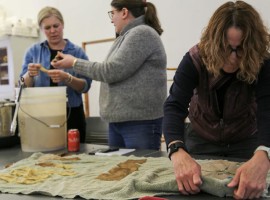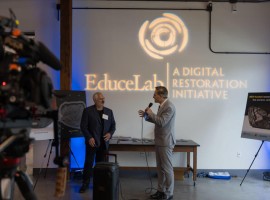Developing Membranes for Environmental Remediation
Sebastian Hernandez, a PhD student in D.B. Bhattacharyya’s lab at the UK Superfund Research Center, is creating membranes with metal nanoparticles to detoxify water containing pollutants like TCE or PCBs.
“My research focuses directly in looking for different supports,” Hernandez explains, “I’m using flat-sheet membranes, I’m using hollow-fiber membranes. I’m using just the gel that we put into the membranes. We are looking for better approaches, depending on the problem. And, the good thing about this for communities and for the market, is that it’s cost effective because we can recover these particles.”
Nanoparticles have a really high surface area, which means they can do reactions quickly. “We can have dechlorination, in this case, maybe in less than two hours or so. We are working alongside with a company that manufactures these membranes. The idea is to have a nice combination of this support, particle loading, that we can design the type of treatment we need for a certain problem,” he says.
See all of the research under way at the UK Superfund Research Center by visiting their site: http://www.uky.edu/superfund.





